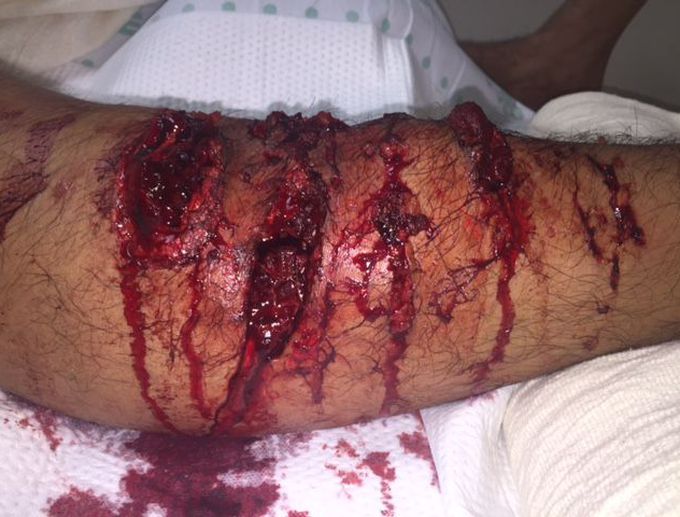


Antibiotic of Choice in Dog Bite Injuries
Dog bites result in disruption of normal barrier function of skin, predisposing it to organisms from microflora of the dog along with microorganisms present on skin, clothing, accessories etc. The infection is typically polymicrobial i.e. a mixture of both aerobes and anaerobes. Among all the microorganisms deposited as a result of dog bite, the most threatening is Pasteurella. Pasteurella is gram negative organism, and it is identified in more than 50% of the cases of dog bites. Due to intense inflammatory response to Pasteurella, there is an increased likelihood of developing metastatic infection; the number may be as high as 30% of the cases. The consequence of metastatic infection is septicemia which results in increased mortality. The choice of antibiotic in case of dog bite injuries is amoxicillin in combination with clavulanic acid, commonly known as co-amoxiclav. Amoxicillin eliminates bacteria by inhibiting formation of peptidoglycan wall. Due to irreversible binding of clavulanate molecules to bacterial beta-lactamase, it protects amoxicillin from inactivation. Amoxicillin is broad-spectrum antibiotic with coverage against gram positive and gram-negative bacteria. Clavulanic acid adds additional spectrum by providing coverage against MRSA, Proteus, Pasteurella, among others. In case of allergy, metronidazole and doxycycline may be administered instead of co-amoxiclav, however, it reduces compliance due to intake of two drugs simultaneously as compared to single combination drug. Source Use of co-amoxiclav for the treatment of dog bites https://www.magonlinelibrary.com/doi/full/10.12968/jpar.2020.12.5.CPD1 Image via https://jetem.org/k9-police-dog-bite/

